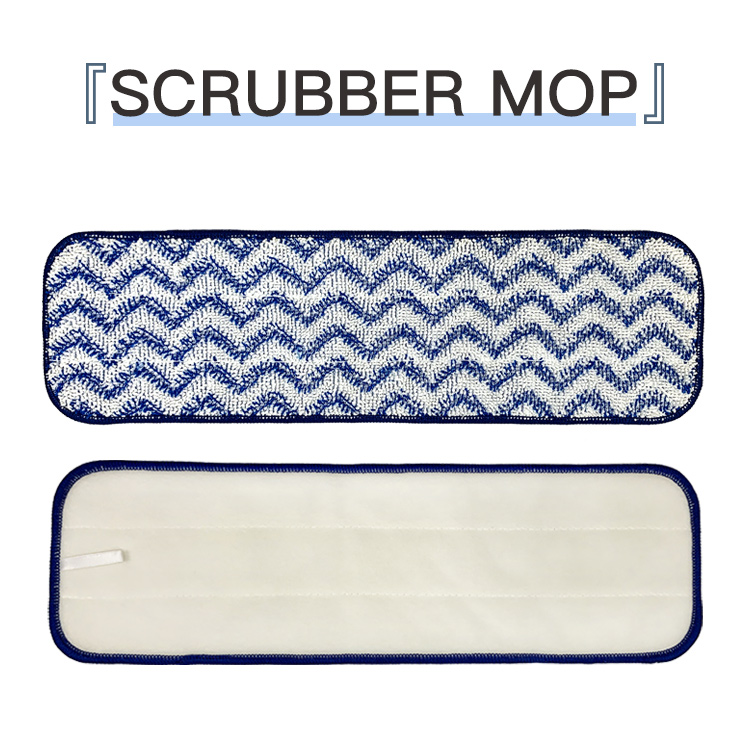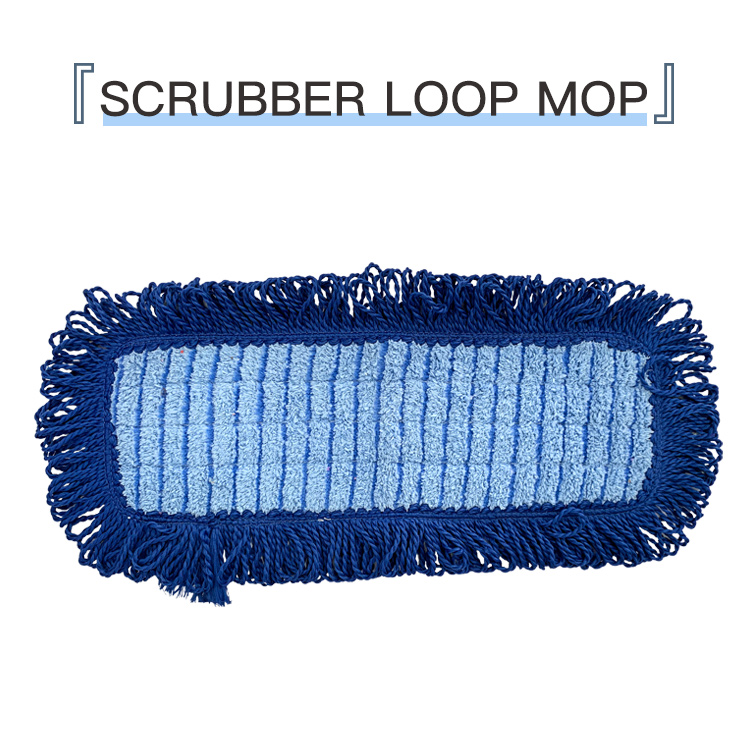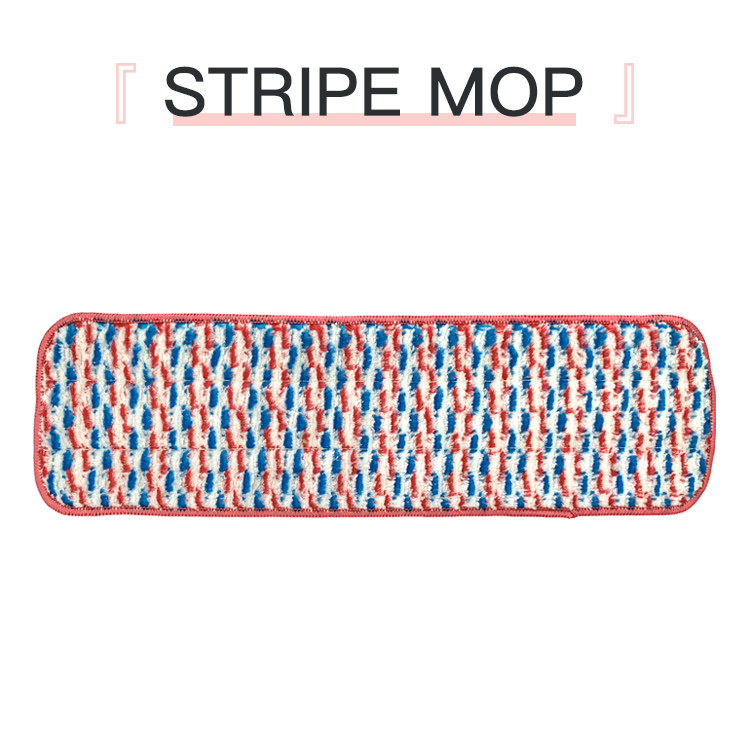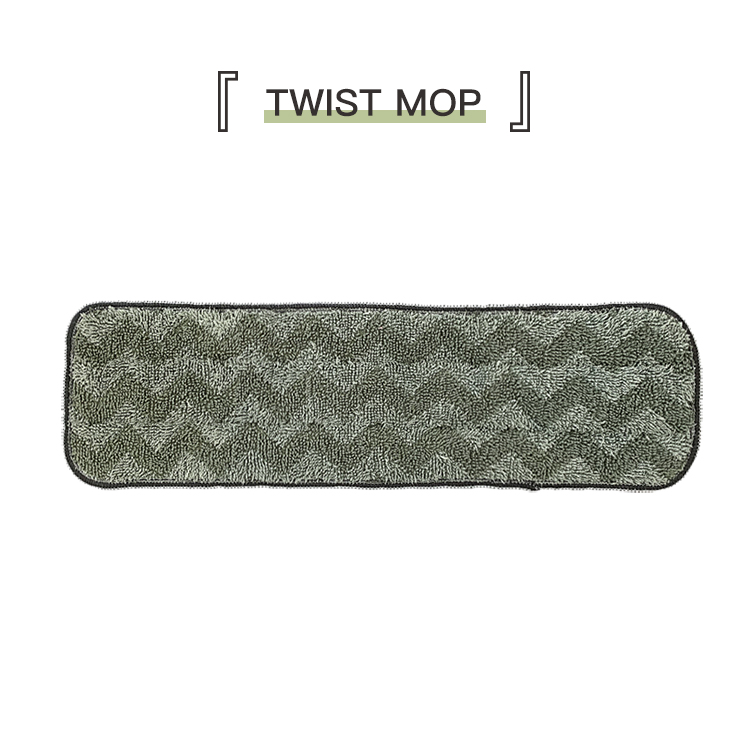Mop Pad is designed for deep cleaning, microfiber mop head pad is different from traditional sponge mop, this microfiber mop cloth can penetrate deep into cracks and absorb more than 50% of the dirt, greatly improving the stain removal ability by more than 3 times without damage your floor. Deep cleaning provides you with a safe and healthy living environment. Mop pad replacement is carefully crafted from super absorbent material microfiber material, this mop pad replacement is made of polyester and polyamide microfiber material, durable and durable Reusable while absorbing 30% more water than normal mop pads.
Mop Pad,Flat Mop Head,Flat Head Microfiber Mop,Microfibre Mop Head SUZHOU BETTER CLEAN CO LTD , https://www.betterclean.net



The power of technological change is endless
Speaking of enterprise competitiveness, technological innovation is always an indispensable topic. The development history of Tongling Huayuan is also a history of technological innovation. By continuously innovating technology, Tongling Huayuan has not only become a strong force in the industry but also ranks among the top ten in the Ma textile sector.
Tongling Huayuan leverages technological innovation to expand its market presence. More importantly, these innovations have driven the upgrading of industries, enabling enterprises to weather storms even in times of difficulty.
Back in 2008, despite the global financial crisis and weak market demand, Tongling Huayuan still managed to achieve sales revenue of 650 million yuan. In an interview with the "Textile and Apparel Weekly," Chairman Liu Yaping attributed this success to the company's ongoing improvements in technological standards and new product development capabilities.
Since its founding in the 1950s, Tongling Huayuan has been committed to technological innovation. By deeply processing and fully utilizing flax, ramie, hemp, and other fibers, the company has established an integrated industrial chain covering spinning, weaving, dyeing, finishing, and garment production. With two printing and dyeing companies, one clothing company, and one car interior company, Tongling Huayuan possesses significant capabilities in producing knitted fabrics, printed fabrics, and hemp fabrics.
After China joined the WTO, Tongling Huayuan accelerated its technological innovation to cope with intensified international competition. In 2001, the company successfully designed a new "short fiber spinning" production line by replacing and transforming the 4200 ingot ramie production line's front spinning equipment and utilizing ramie equipment for flax and linen wet spinning. This marked the first time in the country to adopt the wet spinning process for flax and became the first company to use linen equipment for flax production. This breakthrough solved the technical challenge of using ramie equipment for linen production, providing new avenues for selecting linen wet spinning technology and equipment, and broadening the options for the technical route of linen wet spinning. This significant product technology research achievement earned the company the 2002 China Huayuan Group's "Golden Idea" award for rationalization proposals. Continuous technological innovation has raised Tongling Huayuan's shuttleless loom rate from 10% at the start to 100% today. The company can now produce 30 blended yarns of linen, ramie, cotton, and viscose at a domestically advanced level. Its hemp knot-free production line, linen bleaching, drying, dust removal, and other processes rank among the best in the world. Tongling Huayuan also imports advanced ramie spinning production lines from France and Germany, leading the industry in producing pure ramie seamless yarn.
Technological innovation not only helped Tongling Huayuan capture the market but also earned numerous accolades. For instance, its polyester-cotton pineapple three-in-one colored cloth won the title of a national key new product in 2001; its high-grade functional ramie-bamboo fiber fabric research won the second prize for scientific and technological progress in Anhui Province in 2006. Products like natural hemp fiber composite panels used in automotive interiors received the "Comprehensive Resource Utilization Certificate in Anhui Province" and were recognized as high-tech products by the Anhui Science and Technology Bureau. The Tencel/pineapple/polyester blended fabric and ramie/cotton interwoven satin fabric were honored with the "Excellent Fabrics of the 83rd World Textiles Conference." The company also ranked among the top 500 competitive textile and apparel enterprises in 2007-2008.
Chairman Liu Yaping emphasized that excellent product quality and technology are the foundation for winning consumer trust and maintaining market position. Under continuous technological innovation, Tongling Huayuan's annual sales revenue has grown steadily. Each year, the company introduces new products accounting for 30% of total sales, with new product profits making up 42% of total profits.
Innovation capability is a critical factor in determining competitiveness levels. Improving competitiveness involves continuous innovation. Tongling Huayuan has consistently embraced the principle of "small steps and rapid progress" in technological transformation, investing over 20 million yuan annually in technical upgrades and new product development. Reflecting on the company's growth, Liu Yaping believes that technological innovation enhances competitiveness and enables steady progress amidst challenges. He stated, "In the future, Tongling Huayuan will continue to focus on product technology innovation, management innovation, adjusting product structures, optimizing management models, and leveraging innovation and development as drivers for growth."
Competitiveness plays a vital role in advancing the technological progress of the textile and apparel industry. Enhancing competitiveness requires continuous technological transformation, innovation, and progress. During this process, outdated production capacities must be eliminated to achieve industrial upgrading, structural adjustments, and elevate the overall competitiveness of China's textile and apparel sector.
According to Liu Yaping, Chairman of Tongling Huayuan, the top 500 competitiveness evaluations for textile and apparel companies organized by the China Textile Industry Association during 2007-2008 yielded two key benefits: first, improving the industry's overall competitiveness and motivating enterprises to establish benchmarks within the sector, thereby enhancing corporate management; second, for those companies designated as top 500, it positively impacted their corporate image, reputation, brand value, and market expansion, with lasting effects on future development and economic performance.
After revision:
When discussing business competitiveness, technological innovation remains a central theme. Tongling Huayuan’s journey mirrors its relentless pursuit of innovation. Relying on constant technological advancements, the company has not only grown into a formidable player in the textile industry but also secured a prestigious spot among the top ten in the Ma textile sector.
Leveraging technological innovation, Tongling Huayuan has successfully opened new markets and, more importantly, driven industrial upgrades. This has allowed the company to navigate turbulent times with resilience.
In 2008, amid the global financial crisis and sluggish market demand, Tongling Huayuan still managed to achieve sales revenue of 650 million yuan. In an interview with the "Textile and Apparel Weekly," Chairman Liu Yaping credited this success to the company's consistent enhancement in technological expertise and new product development capabilities.
Established in the 1950s, Tongling Huayuan has consistently prioritized technological innovation. By deeply processing and fully utilizing fibers such as flax, ramie, and hemp, the company has built an integrated industrial chain encompassing spinning, weaving, dyeing, finishing, and garment production. With two printing and dyeing companies, one clothing company, and one car interior company, Tongling Huayuan boasts substantial capabilities in producing knitted fabrics, printed fabrics, and hemp fabrics.
Following China's entry into the WTO, Tongling Huayuan intensified its technological innovation efforts to counteract fiercer international competition. In 2001, the company successfully designed a new "short fiber spinning" production line by replacing and upgrading the 4200 ingot ramie production line's front spinning equipment and using ramie equipment for flax and linen wet spinning. This marked the first time in the country to adopt the wet spinning process for flax and became the first company to use linen equipment for flax production. This breakthrough resolved the technical issue of using ramie equipment for linen production, offering new pathways for selecting linen wet spinning technology and equipment, and broadened the options for the technical route of linen wet spinning. This major product technology research achievement won the 2002 China Huayuan Group's "Golden Idea" award for rationalization proposals. Continuous technological innovation has increased Tongling Huayuan's shuttleless loom rate from 10% at the outset to 100% today. The company can now produce 30 blended yarns of linen, ramie, cotton, and viscose at a domestically advanced level. Its hemp knot-free production line, linen bleaching, drying, dust removal, and other processes rank among the best globally. Tongling Huayuan also imports advanced ramie spinning production lines from France and Germany, leading the industry in producing pure ramie seamless yarn.
Technological innovation not only helped Tongling Huayuan secure the market but also earned numerous accolades. For example, its polyester-cotton pineapple three-in-one colored cloth won the title of a national key new product in 2001; its high-grade functional ramie-bamboo fiber fabric research won the second prize for scientific and technological progress in Anhui Province in 2006. Products like natural hemp fiber composite panels used in automotive interiors received the "Comprehensive Resource Utilization Certificate in Anhui Province" and were recognized as high-tech products by the Anhui Science and Technology Bureau. The Tencel/pineapple/polyester blended fabric and ramie/cotton interwoven satin fabric were honored with the "Excellent Fabrics of the 83rd World Textiles Conference" award. The company also ranked among the top 500 competitive textile and apparel enterprises in 2007-2008.
Chairman Liu Yaping emphasized that excellent product quality and technology form the bedrock for gaining consumer trust and sustaining market presence. Under continuous technological innovation, Tongling Huayuan's annual sales revenue has steadily grown. Each year, the company introduces new products accounting for 30% of total sales, with new product profits comprising 42% of total profits.
Innovation capability is a pivotal factor in determining competitiveness levels. Improving competitiveness involves continuous innovation. Tongling Huayuan has consistently embraced the principle of "small steps and rapid progress" in technological transformation, investing over 20 million yuan annually in technical upgrades and new product development. Reflecting on the company's growth, Liu Yaping believes that technological innovation strengthens competitiveness and enables steady progress amid challenges. He stated, "In the future, Tongling Huayuan will continue to focus on product technology innovation, management innovation, adjusting product structures, optimizing management models, and leveraging innovation and development as drivers for growth."
Competitiveness plays a crucial role in advancing the technological progress of the textile and apparel industry. Enhancing competitiveness requires continuous technological transformation, innovation, and progress. During this process, outdated production capacities must be eliminated to achieve industrial upgrading, structural adjustments, and elevate the overall competitiveness of China's textile and apparel sector.
According to Liu Yaping, Chairman of Tongling Huayuan, the top 500 competitiveness evaluations for textile and apparel companies organized by the China Textile Industry Association during 2007-2008 yielded two key benefits: first, improving the industry's overall competitiveness and motivating enterprises to establish benchmarks within the sector, thereby enhancing corporate management; second, for those companies designated as top 500, it positively impacted their corporate image, reputation, brand value, and market expansion, with lasting effects on future development and economic performance.